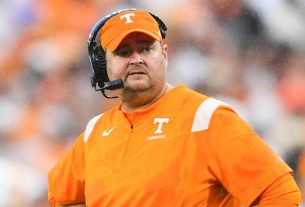|
Getting your Trinity Audio player ready...
|
The Tokyo Olympics is here, and SportsEngine is shining the spotlight on five of the reigning and emerging stars for Team USA. You”ll learn about their journey, including in the formative years that helped propel that athlete to become one of the nation’s–and world’s–best.
Check out the third installment, with six insights on Rose Lavelle, who helped the United States win the 2019 FIFA Women’s World Cup and earned the Bronze Ball as the third-best player in the tournament.
Lavelle was fascinated by soccer from a very young age
Born in Cincinnati, Lavelle’s parents didn’t know much about soccer. But before she could even speak, Lavelle was fascinated by European soccer on television. In fact, her mother Janet told The Ringer that she and her daughter would watch soccer on television while waiting for Mr. Lavelle to come home from work. “It was just me and her,” Janet recalled. “All the time, that’s what we put on. Soccer.”
Her coach, Neil Bradford, was the reason she fell in love with the sport
Lavelle first played soccer in a co-ed league at the YMCA. But she developed in the Soccer Association for Youth in Cincinnati, primarily under the guidance of Neil Bradford, an Englishman who played professionally with Bristol City. “My coach, Neil Bradford, made (soccer) so fun for me and would give me little challenges to do in my backyard,” she told The Guardian in 2020. “He’s the reason I fell in love with the game. He made every practice and every game so much fun. When you’re that young, fun is why you are doing it. Soccer brings you joy.” Other coaches said her passion for the game and a commitment to training and improving were some of her best assets.
Lavelle used smarts, skills, and tricks to make up for her small size
Typically the smallest player on the field, especially when she played with boys, Lavelle was pushed by Bradford to outthink opponents with her field vision and to maintain possession with her skills and tricks. “She said to me one time, ‘Mom, I fooled them. That’s how I got around that goal,” Janet says. There’s a video clip from 2006 of Lavelle completing a challenge from Bradford where she controls the ball with her foot, knee, chest, shoulder, and head, then does a push-up with the ball on her back, then rises and lifts the ball into the air. She finishes off with a bicycle kick into the goal. At the time, she was 11 years old.
Coach Paula Wilkins saw something special in Lavelle, even though she wasn’t highly recruited
Despite her production and talent, Lavelle, who weighed 80 pounds entering high school, wasn’t highly recruited. In fact, at 13, she was cut from the Olympic Development Program. “I think I learn a lot more from the lows in my life than the highs and I feel like that’s one of the moments I learned a lot about myself,” Lavelle told NBC Sports. The coach was Paula Wilkins, who eventually added her to the team and was impressed on a trip to Holland. “The players on the opposing teams would chase her, and she would slam on the brakes, and they would fly by her, and she’d have all this open time and space,” Wilkins told Top Drawer Soccer in June 2019. “They couldn’t keep up with her quickness. At that point, she couldn’t really connect the passes. But I saw this dynamic ability to free herself up and create space for herself that was pretty special at the time.” Wilkins later recruited Lavelle to play at the University of Wisconsin.
Lavelle wasn’t prepared to join the U.S. Women’s National Team when they were initially interested in adding her to the roster
Wilkins would be key in another of Lavelle’s greatest setbacks. U.S. Women’s National Team coach Jill Ellis contacted Wilkins and asked if Lavelle was ready to join her team. Wilkins said no. The reason? In a loss for Wisconsin, Lavelle had played poorly, and she was overall struggling with exhaustion, nagging injuries, and her mindset. “She had all these expectations,” Wilkins told Sports Illustrated in March 2020. “She felt like she wasn’t achieving, and it was this mental burden.” Lavelle learned from that disappointment, dedicating more focus to her nutrition, her conditioning and even connecting with a sports psychologist. She practiced meditation and visualization to maintain her peace and manage pressure. The No. 1 pick in the NWSL Draft in January 2017, Lavelle made her first senior international cap a few months later — and the rest is history!
Lavelle is one of the most fun and talented players to watch
Lavelle had one of the best goals of the 2019 FIFA Women’s World Cup. She took a simple pass, just past midfield, then darted toward the goal and created enough space to fire off a hard, left-footed shot into the right side of the net. That’s just one of her 14 international goals, not to mention eight assists. At 26, Lavelle is rooted as one of the game’s best players, and she’ll have many watching her exploits at the Olympics.



